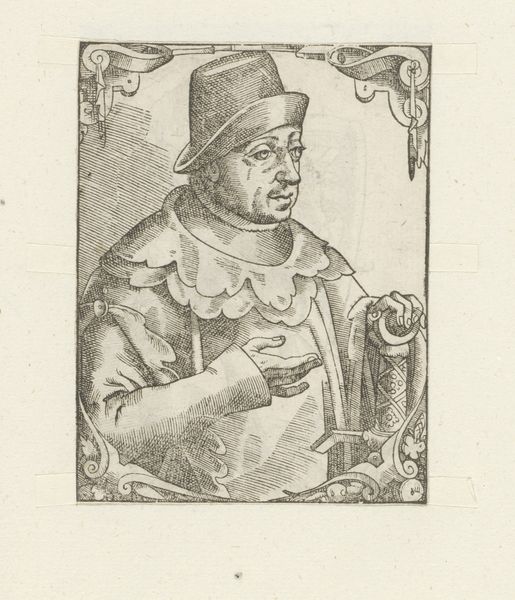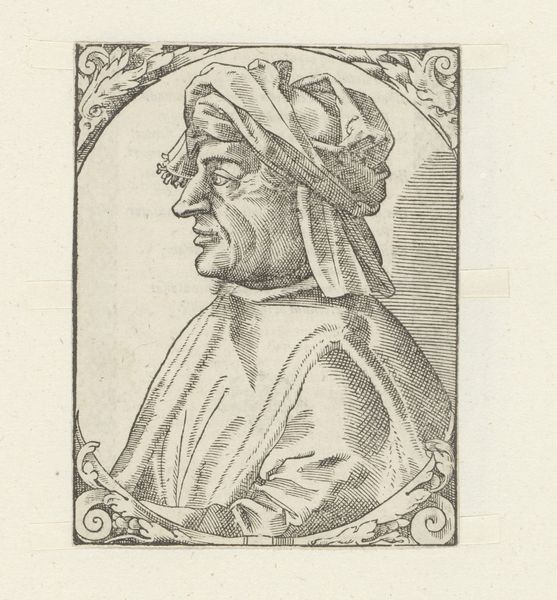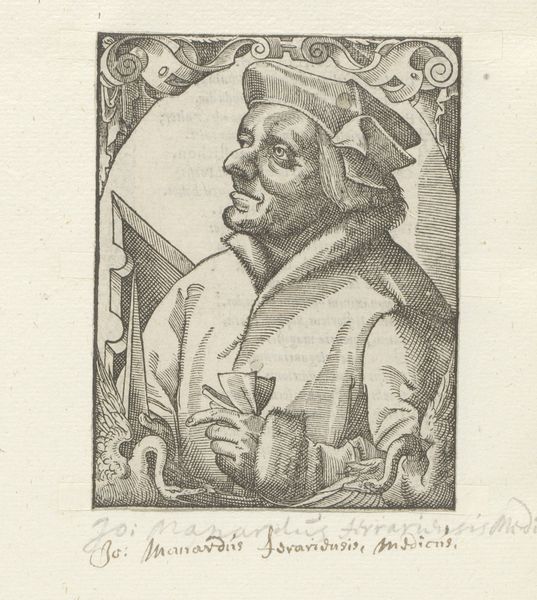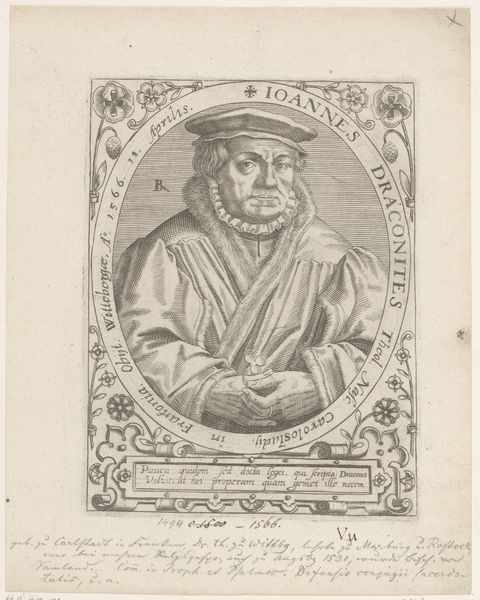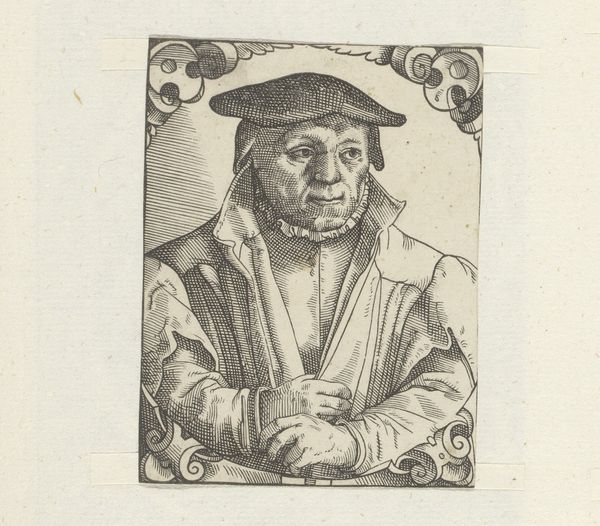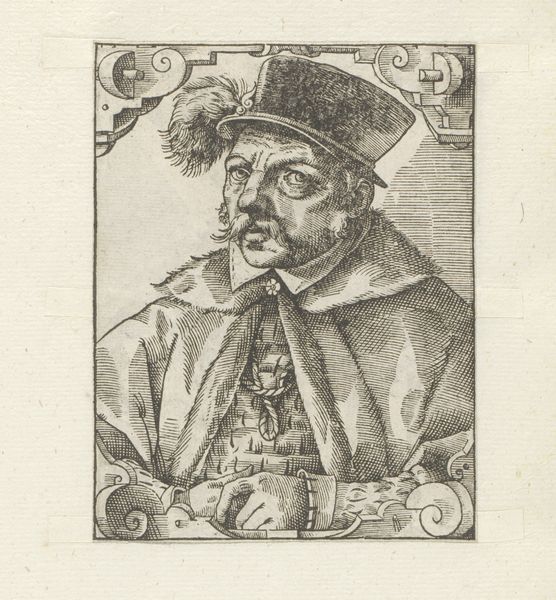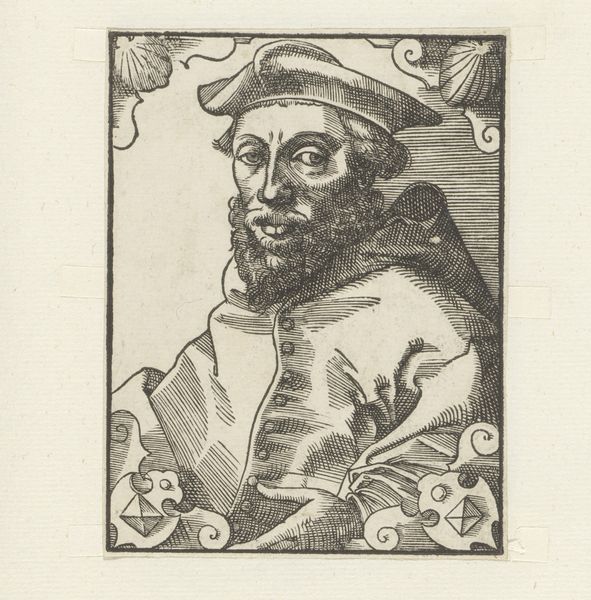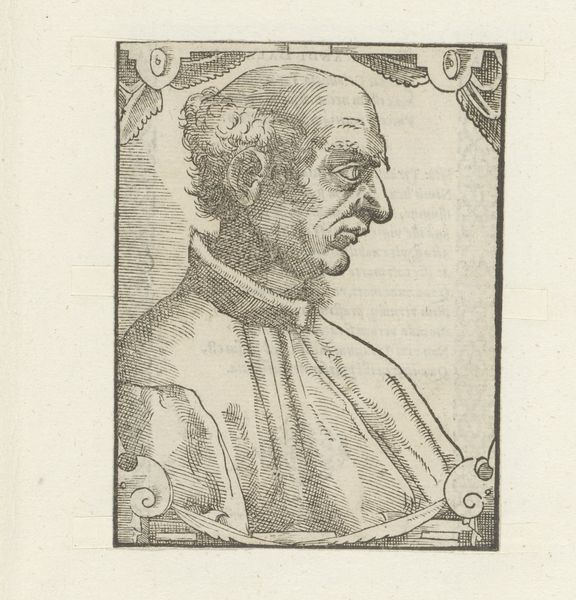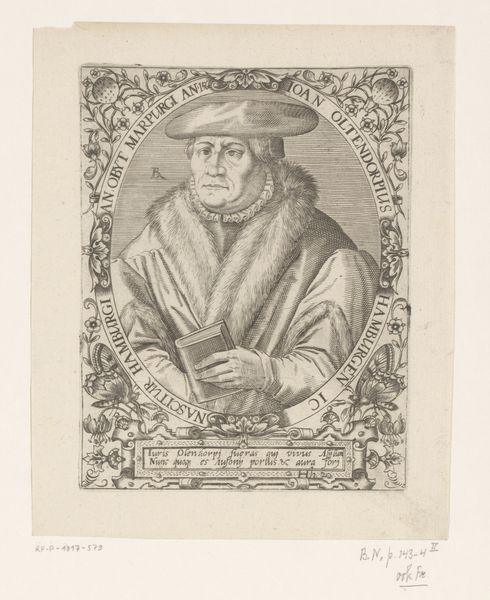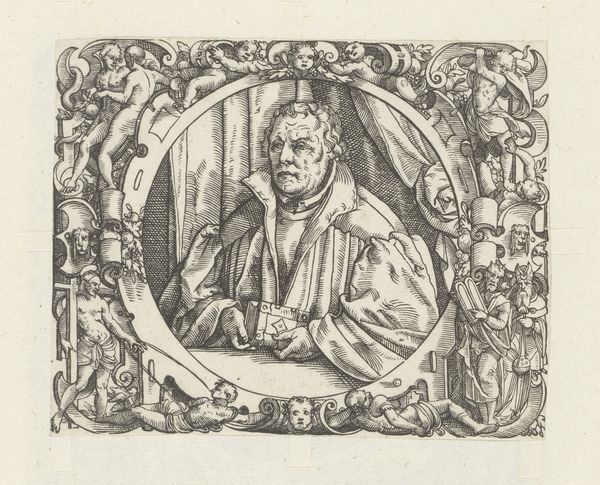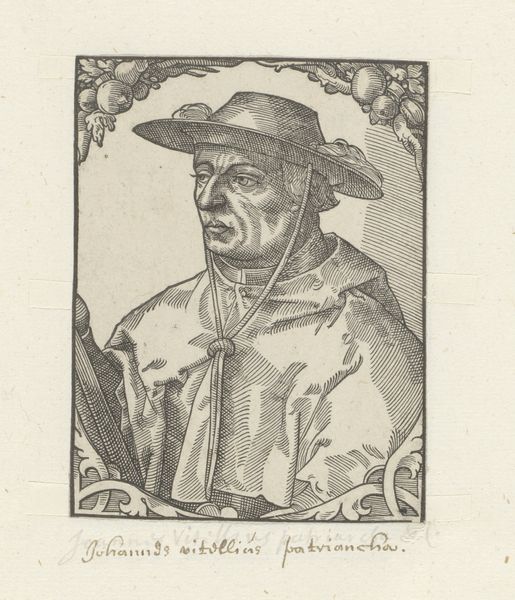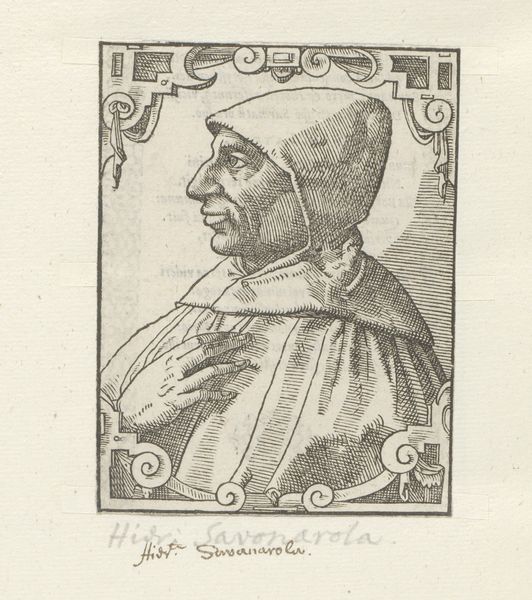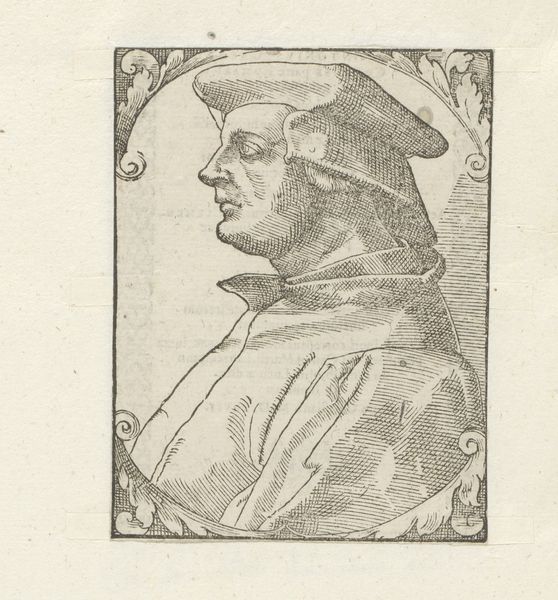
print, engraving
#
portrait
#
pencil drawn
# print
#
pencil sketch
#
caricature
#
mannerism
#
figuration
#
line
#
history-painting
#
engraving
Dimensions: height 108 mm, width 83 mm
Copyright: Rijks Museum: Open Domain
Editor: This is an engraving of Petrus Montanus, dating from between 1549 and 1584. It’s rendered in very fine lines. There's a starkness to the way his face is depicted, almost unflattering. How do you read the imagery? Curator: I see this as a powerful statement about identity and representation in the context of the Reformation. This isn’t just a portrait; it's a declaration. Montanus, a clergyman, is depicted without idealization. Do you notice how the stark realism contrasts with the ornamental frame? Editor: I do. The frame is quite ornate, almost celebratory, while Montanus himself looks…plain. Curator: Precisely. This tension reflects the Protestant emphasis on humility and individual faith, pushing against the opulent displays of power within the Catholic Church. Consider the historical moment: Religious upheaval challenged existing hierarchies, and portraiture became a means to assert new values. How might this image function as propaganda? Editor: I guess showing him plainly human could humanize the reformed church in contrast to the Catholic church. It's a very clever way to frame a message, pardon the pun. Curator: Exactly. The engraving, through its deliberate lack of adornment on Montanus, and its contrast with the decorative border, conveys a specific message about authenticity and the rejection of superficiality, echoing broader debates around religious authority. What new insights has this gave you? Editor: Seeing the portrait as an active part of the Reformation, and its commentary on the superficial. I’ll definitely think about that. Curator: Indeed, it makes the work more than just a historical relic. It is an echo of the political sentiments of that era.
Comments
No comments
Be the first to comment and join the conversation on the ultimate creative platform.
